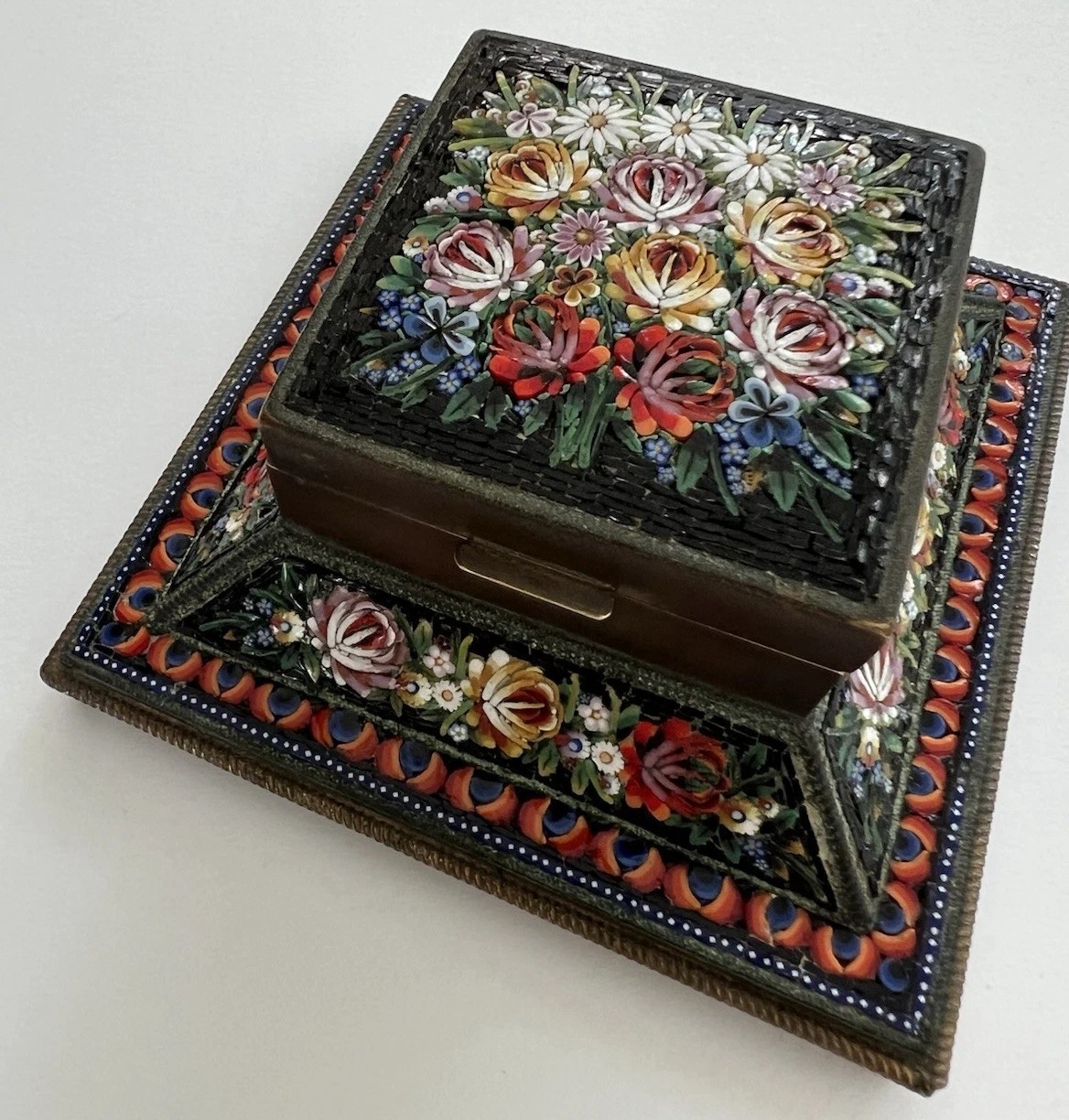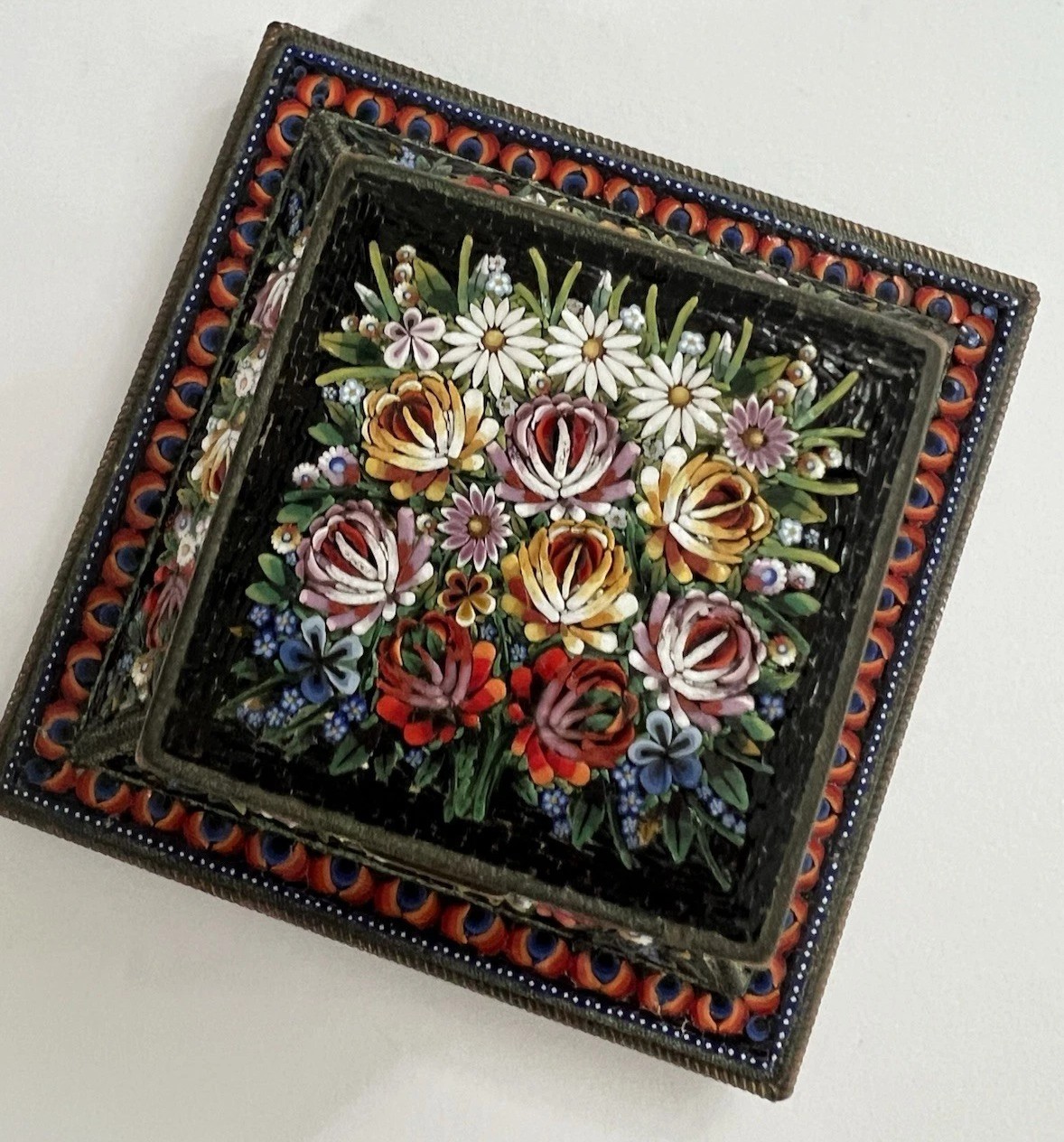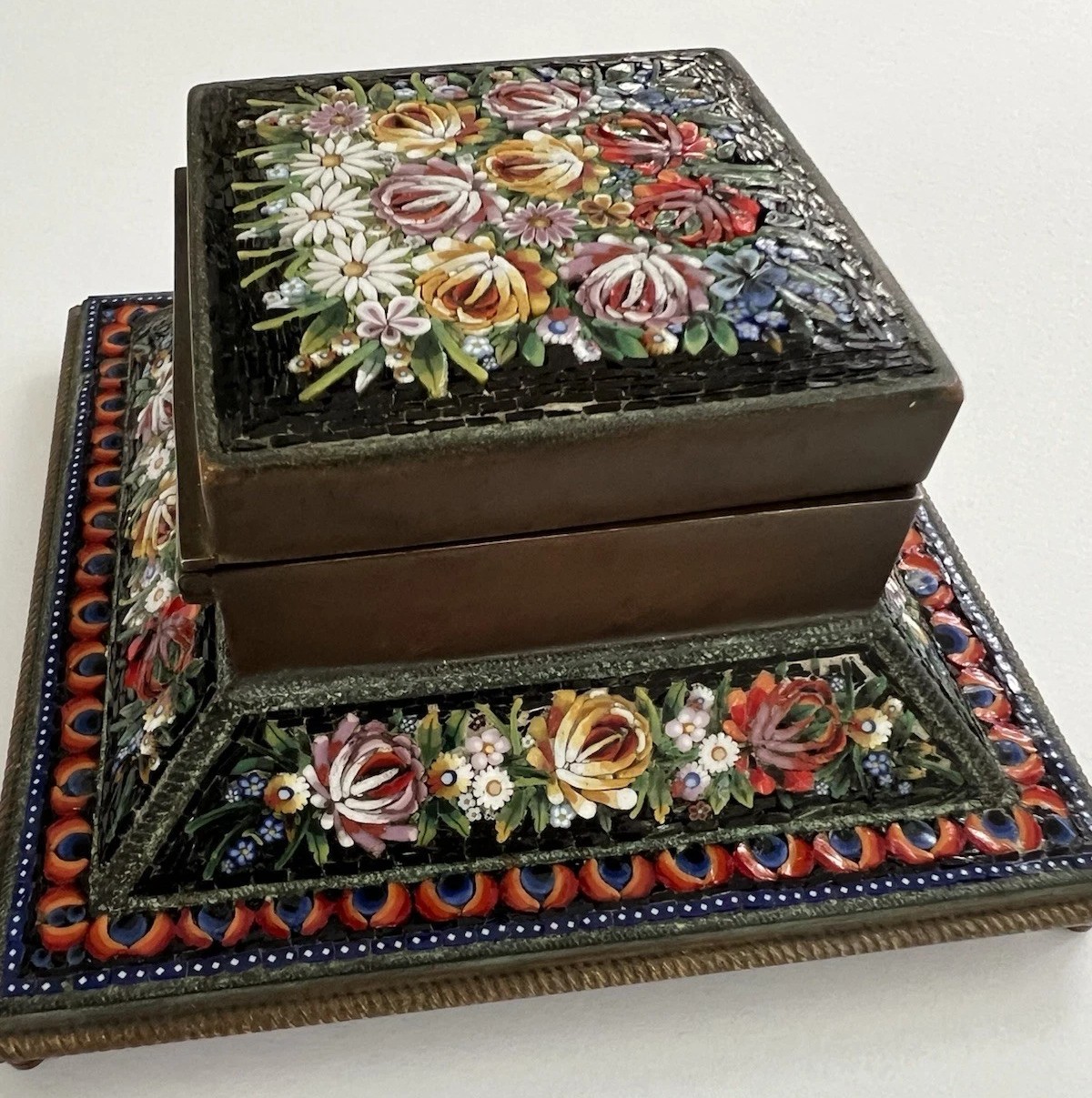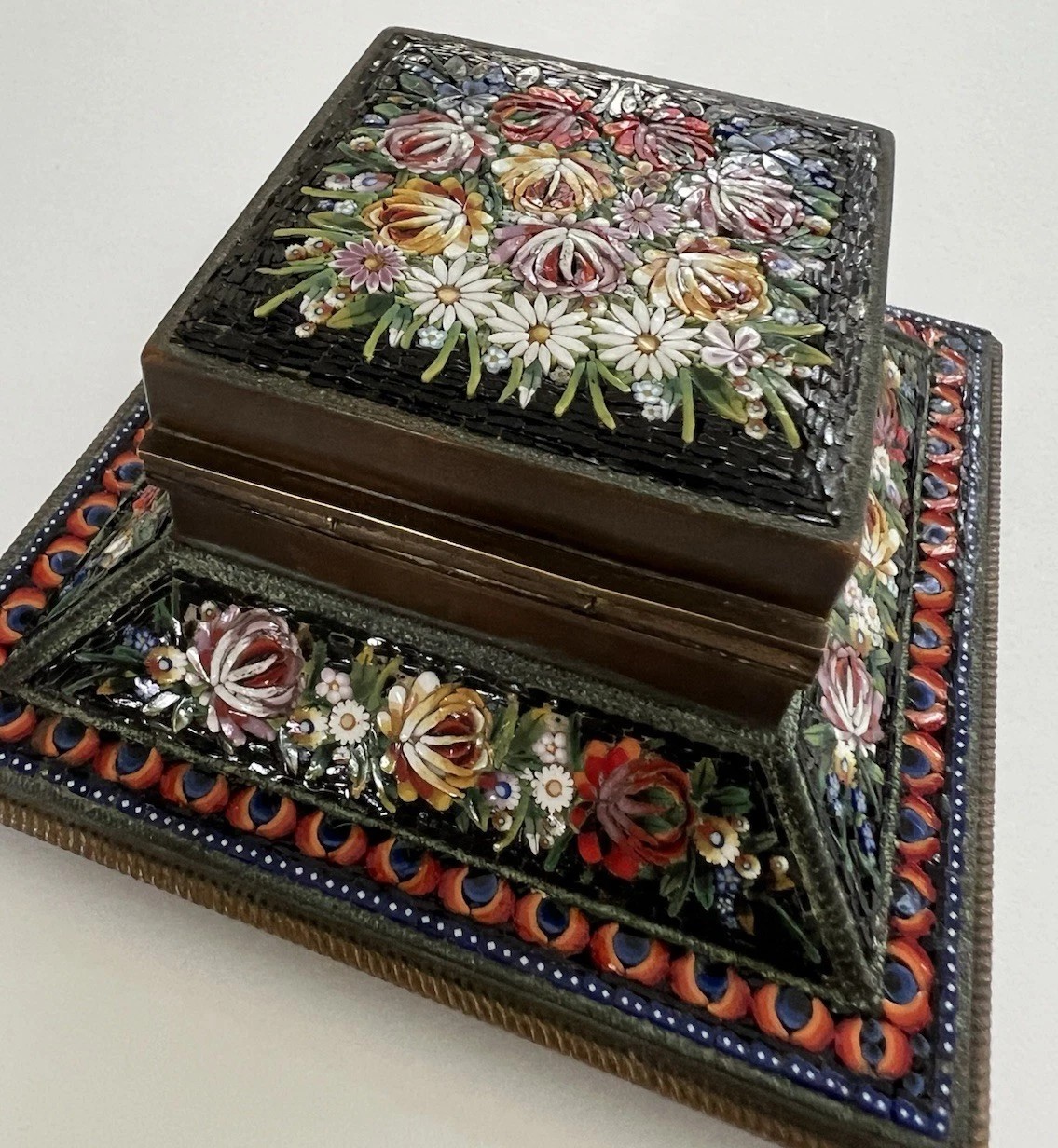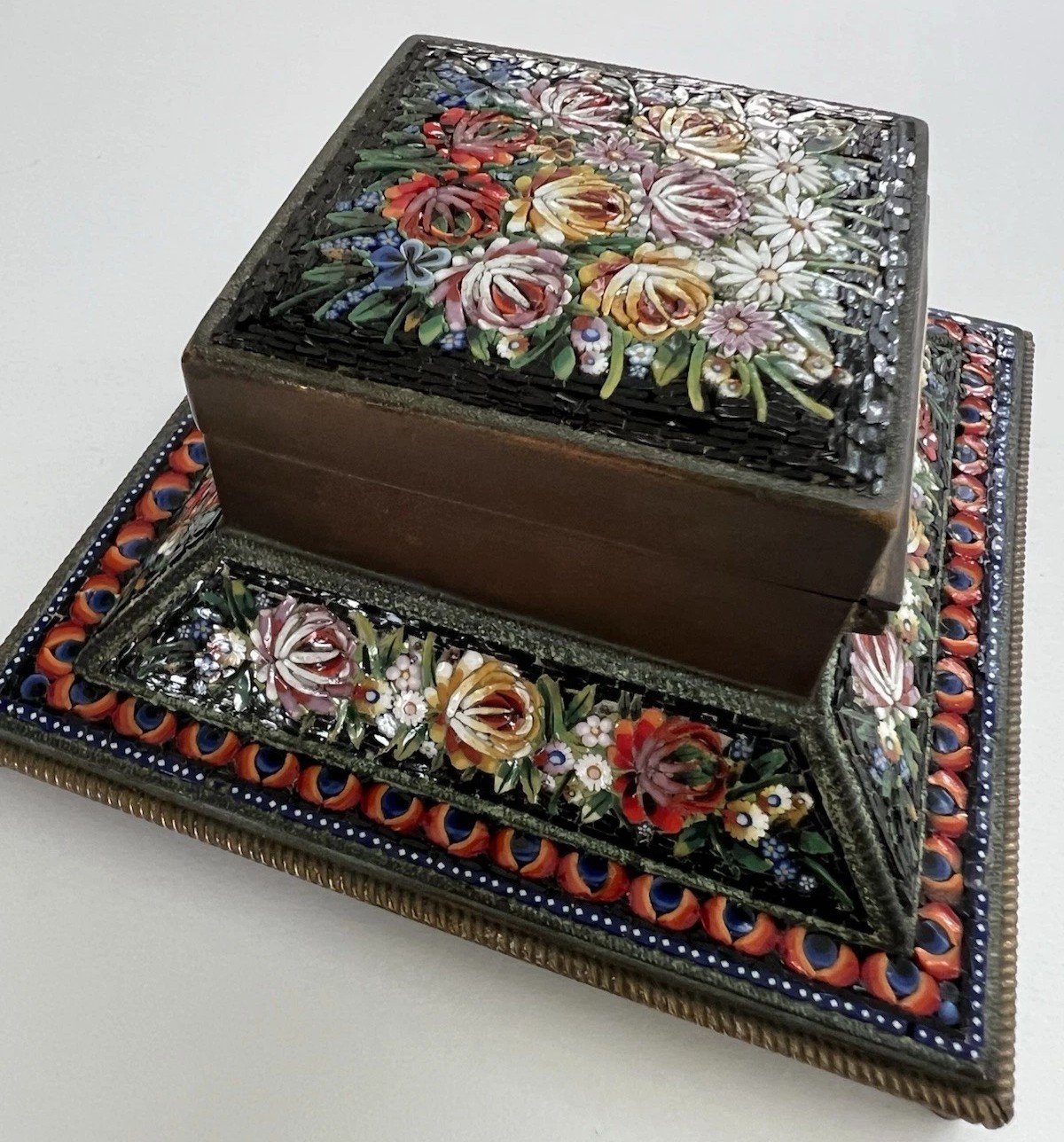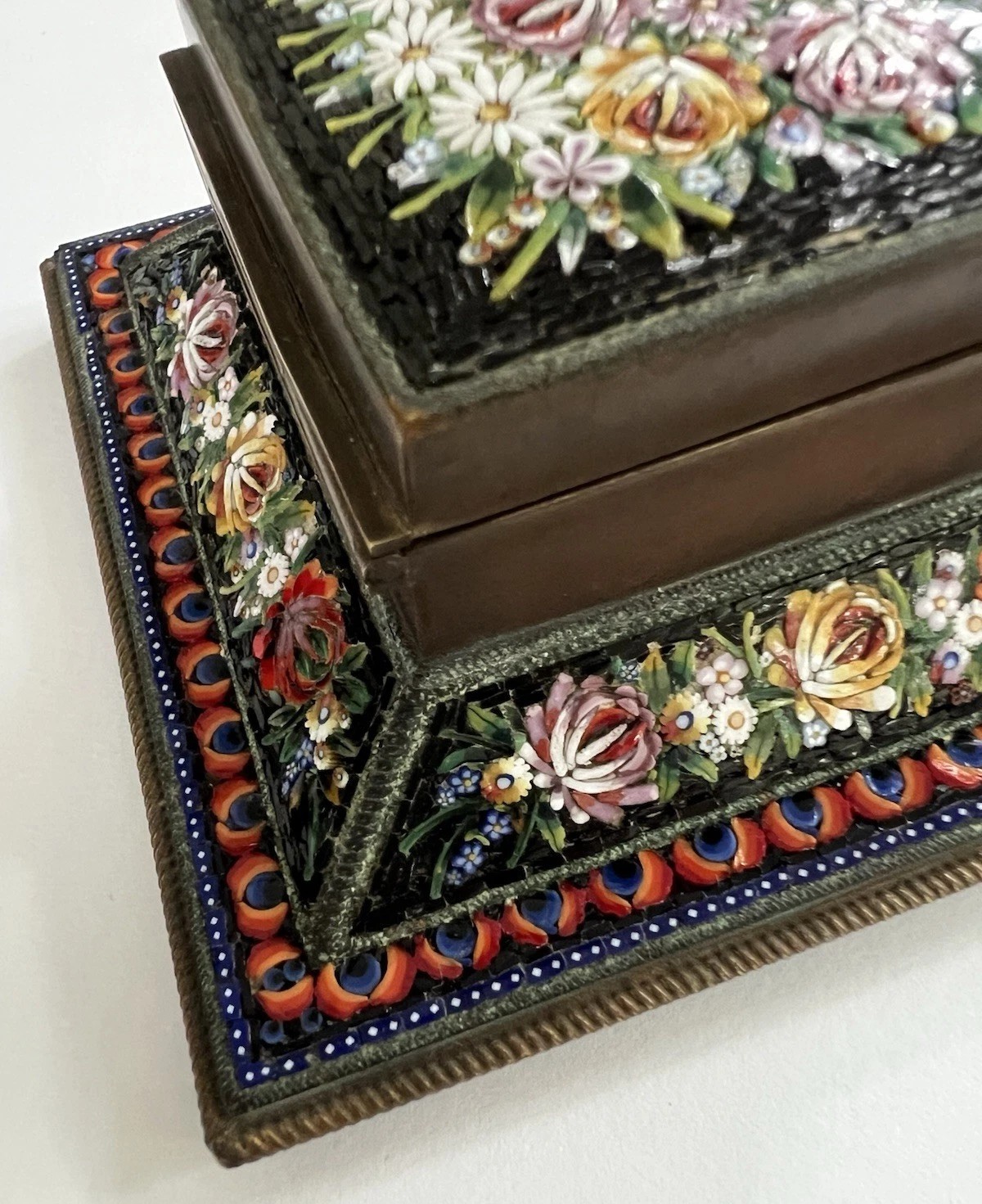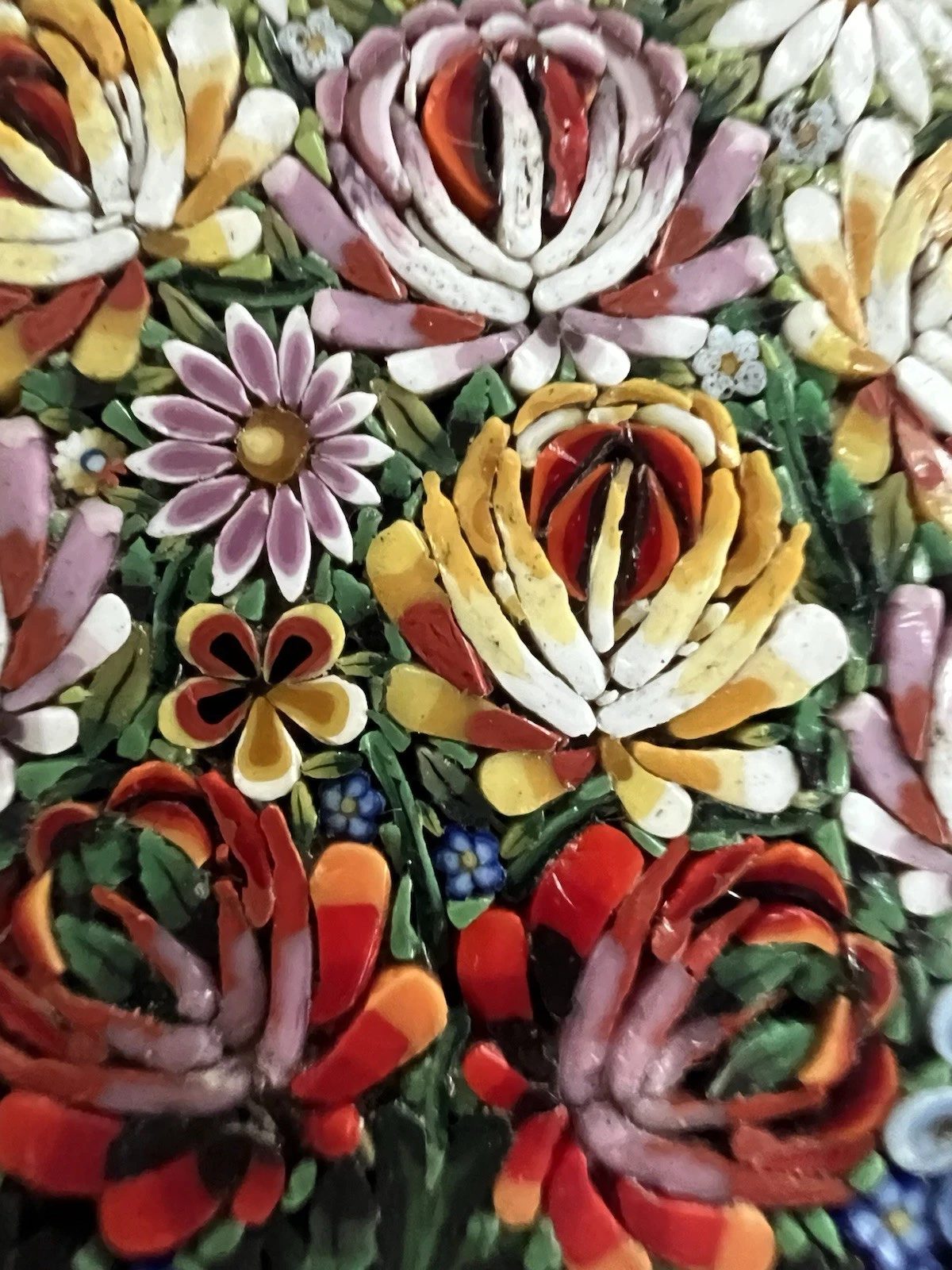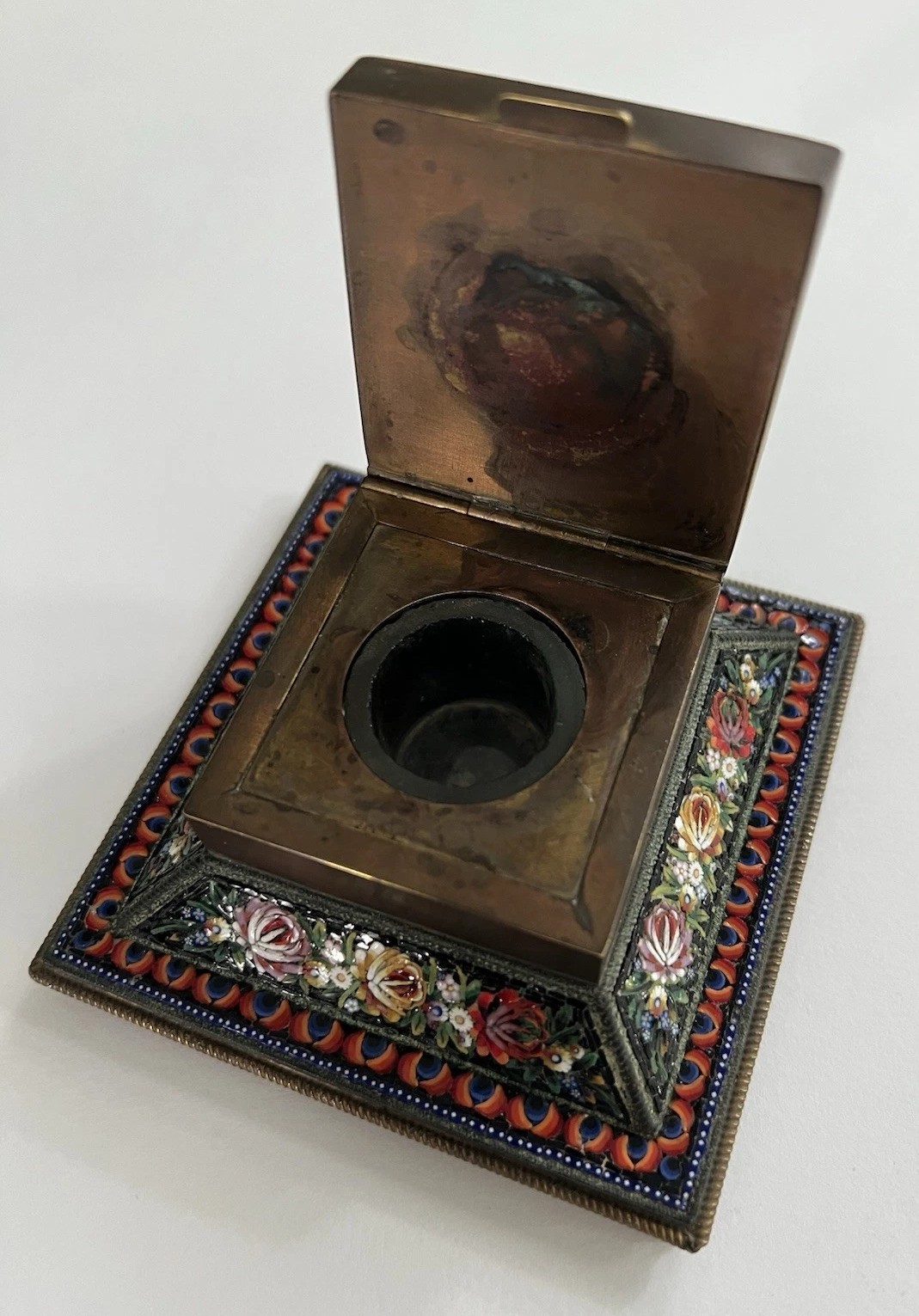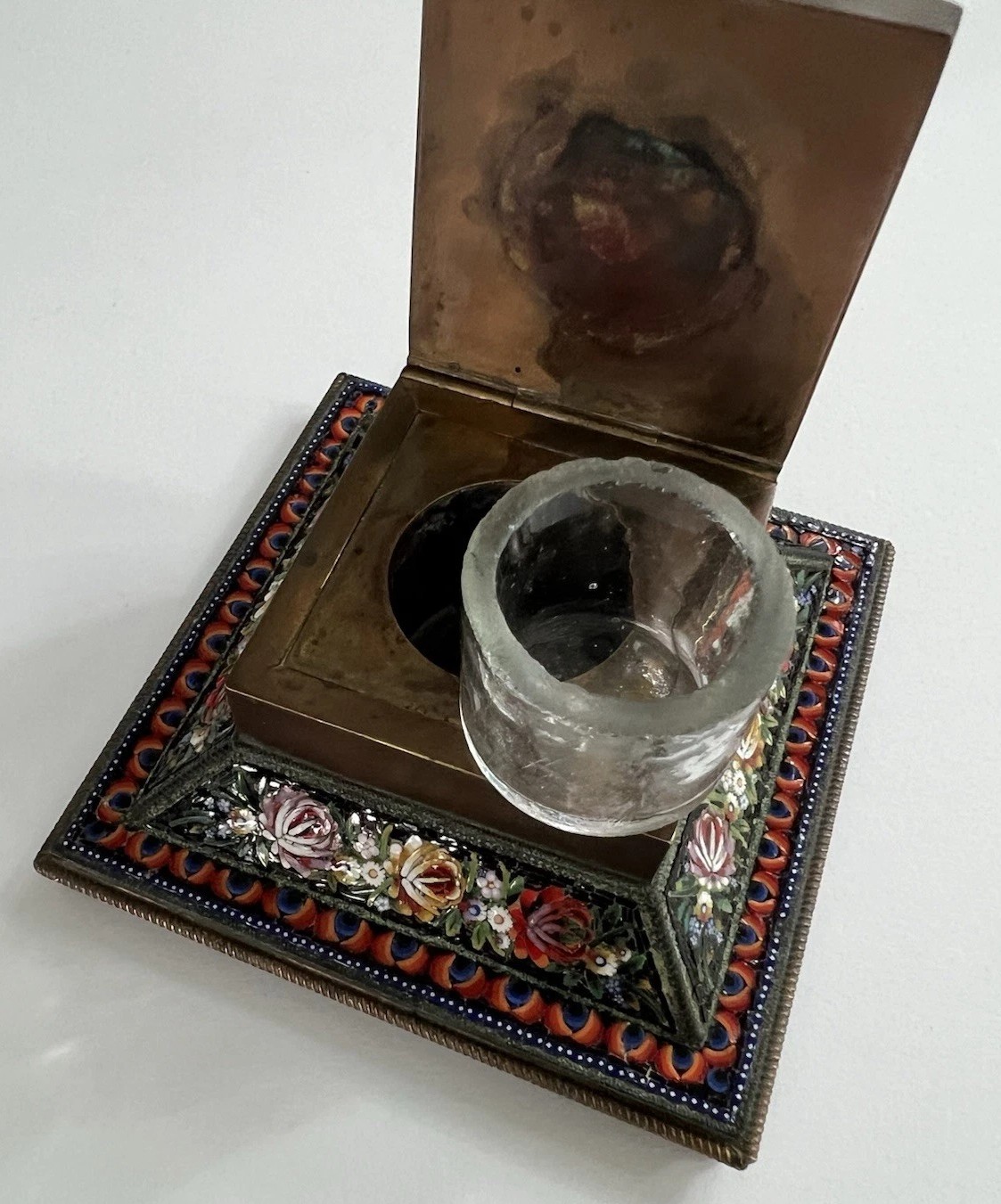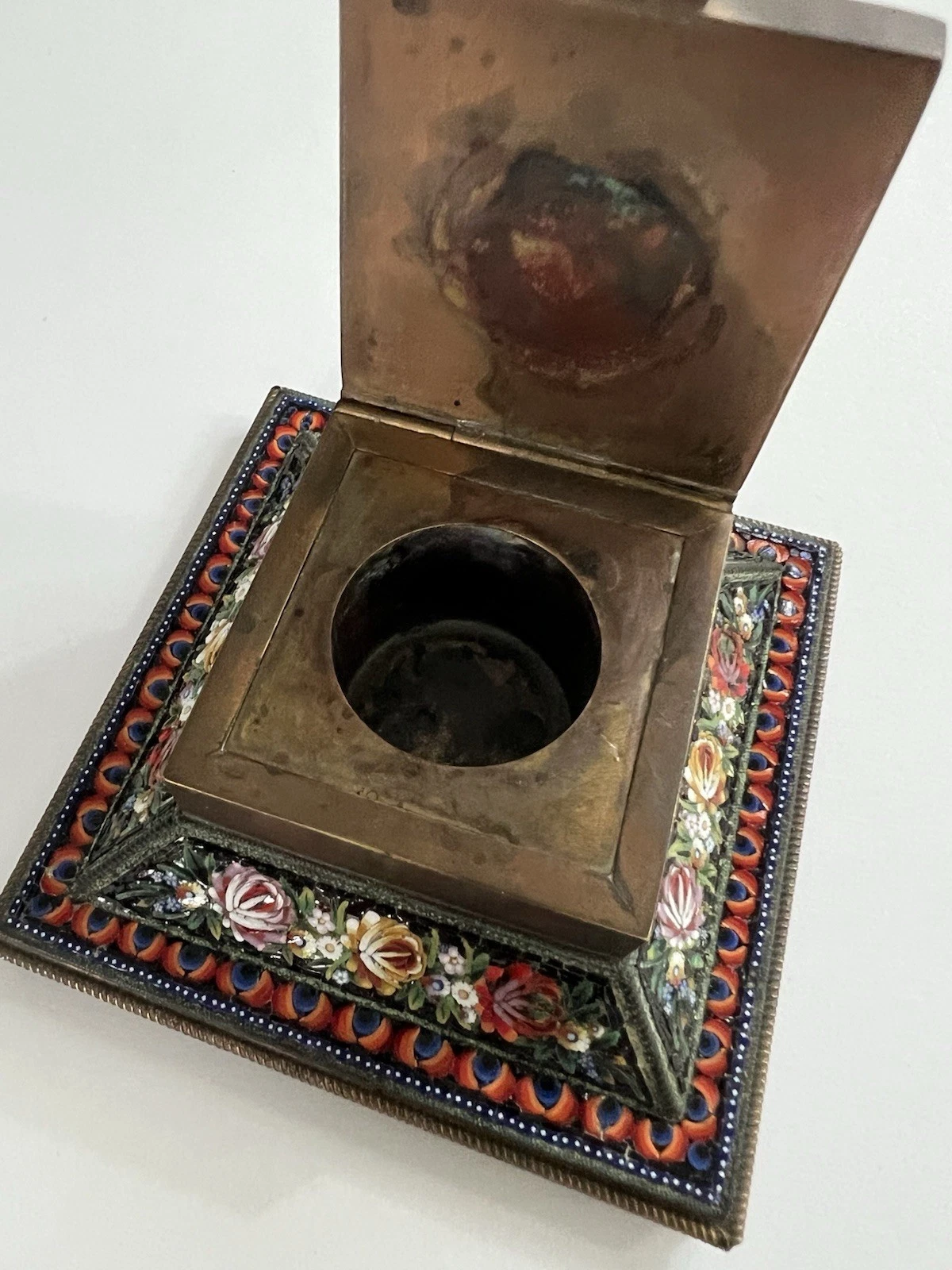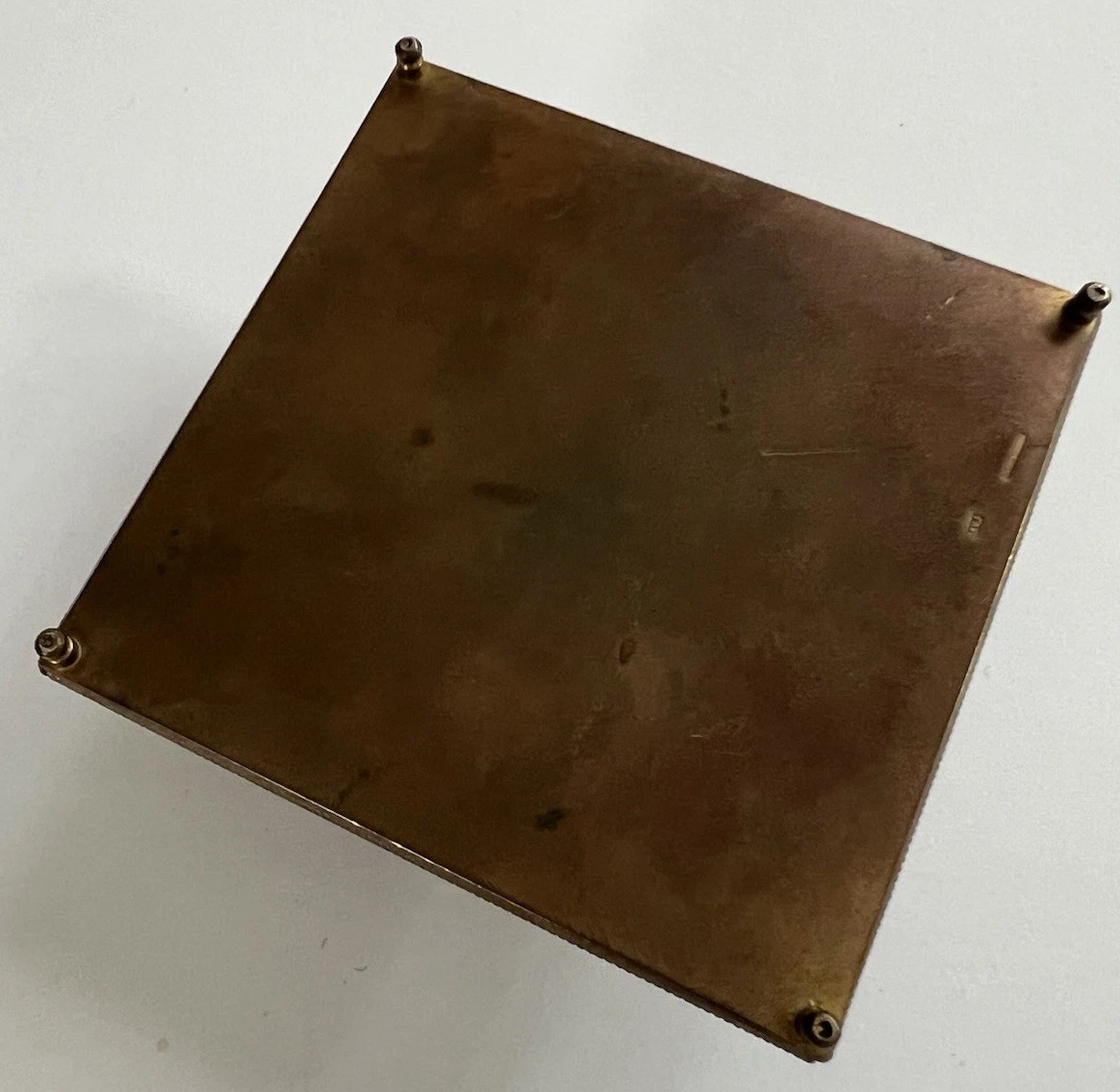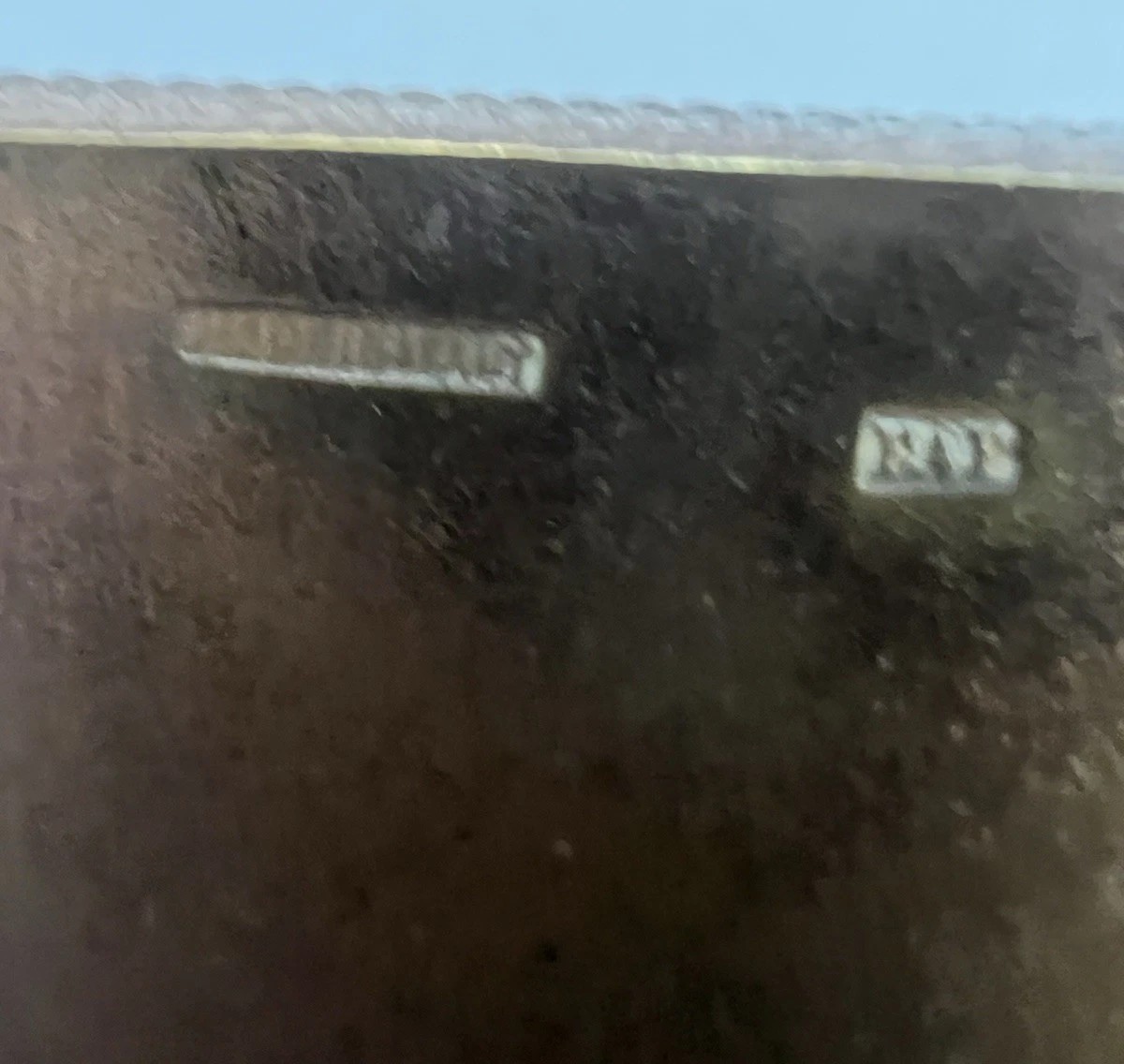
Inkwell with Mini Mosaic Artistry
| Categories | Enameled Metal |
| Material | Brass, Glass |
| Markings | See Narrative |
| Manufacturer | Undetermined |
| Origin | Italy |
| Date or Era | circa 1900 |
| Measuring | 3 ⅝” x 3 ⅝” x 2” high |
The underside of this inkwell is stamped “Made in Italy” and “FAP”, which aligns with Fabbrica Angelo Pessar, a renowned Florentine workshop active in the late 19th to early 20th century. The inkwell is made of a combination of brass mountings with glass micro mosaic tesserae – the tiny, hand-cut pieces that form the intricate floral designs. The surface is encrusted with innumerable tesserae, arranged in vivid bouquets of roses, daisies, and forget-me-nots. The colors—ruby reds, cobalt blues, lemon yellows, and milky whites—are set against a black background. The hinged lid opens to reveal the inkwell’s glass liner.
The Process of Making Micro Mosaics
Micro mosaic is a highly detailed and intricate art form that originated in Italy during the late 18th century. Unlike traditional mosaics, which use larger tiles (tesserae), micro mosaics employ exceedingly small pieces of glass, sometimes as tiny as a pinhead.
To create these intricate designs, artisans use a special type of glass called smalti filati, which is essentially a type of spun enamel glass. This glass is heated and pulled into thin rods, which are then cut into the minute tesserae. The process involves several key steps:
- Preparation: A base, often a tray or a piece of metal like copper or marble, is prepared. A special adhesive, historically a type of mastic or cement, is applied to the base.
- Tesserae Placement: Using tweezers or a fine needle, the artisan meticulously places each tiny tessera in a predetermined pattern. The skill lies in precisely arranging the thousands of minute pieces to form a clear and fluid image, whether it’s a floral design, a landscape, or a portrait.
- Finishing: Once the mosaic is complete and the adhesive has set, the surface is often polished to create a smooth, glossy finish that enhances the vibrant colors of the glass.
The immense labor and skill required make these pieces highly valued. The floral designs on this inkwell are a testament to the artisan’s patience and precision.
Angelo Pessar and FAP
Angelo Pessar was a prominent figure in the micro mosaic industry, particularly in Rome during the late 19th and early 20th centuries. His company, Fabbrica Angelo Pessar (FAP), became known for producing high-quality micro mosaic jewelry and decorative objects, including items like this inkwell.
Pessar’s work, along with that of other Roman mosaicists, capitalized on the burgeoning tourist trade of the era. Tourists on the Grand Tour sought out these exquisite, portable souvenirs that showcased Italian artistry. The pieces often depicted classical ruins, landscapes, and intricate floral patterns like those on this inkwell.
The “FAP” mark on the inkwell is a clear indicator of its origin and suggests it was produced by or for Angelo Pessar’s workshop. His pieces are recognized for their fine craftsmanship, vivid colors, and the use of minute tesserae to achieve a painterly effect.
Sold for $186 in August 2025
Content disclaimer. The information posted is the owner’s best knowledge and may not have been vetted by the SOIC. We welcome comments, corrections, and additions, working to make our website information comprehensive and accurate.
Join the Society of Inkwell Collectors (SOIC) – it’s free!
Founded in 1981 as a non-profit organization,
we are documenting inkwells (and accessories).
We’re here to help and inform!

